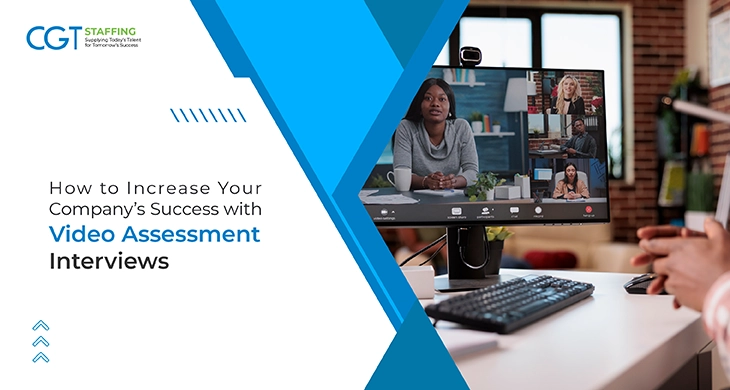Hiring managers and recruiters alike are still grappling with remote hiring. Video assessments in particular are a key challenge, often resulting in poor interviews and a subpar candidate experience. However, virtual assessments have quickly become an extremely important part of the current centralized recruitment model.
Moreover, given the already complex process of remote hiring, video interviews can’t be substituted or discarded; recruiters must make every effort to ensure a successful interview. This blog examines how recruiters and employers can realize this goal.
Table of Contents
Prep or Test Equipment and Software
Remote video interviews are heavily dependent on technology. A client or a recruiter’s choice of software and equipment will have a huge impact on the video interview itself. To ensure a greater prospect of success via a remote talent acquisition strategy, interviewers should take steps to make sure there are no unnecessary disruptions in a video interview.
The most obvious preventative protocol is to test all equipment prior to use, including all microphones, headphones or speakers, and webcams in use. There are other factors to consider as well – interviewers should make sure their internet connection is stable, shut down any programs on their devices that might cause interference, and most importantly, consider a dry run before the interview starts.
Utilize Virtual Backgrounds to Reinforce Employer Brand
A video interview will usually take place on a video conferencing platform like Zoom or Google Meet. These are great platforms on which to conduct interviews, but proprietary virtual meeting spaces are useful tools for gently reinforcing an employer’s brand.
Both platforms support the use of custom backgrounds. Employers can leverage this by designing backgrounds that include their company logo, values, etc. It does not involve much effort and can make a significant difference in the interview experience.
Personalize the Interview Experience as Much as Possible
A remote interview is wholly different than an in-person interview, for many reasons. The distance between participants can be a daunting prospect to overcome. However, interviewers and recruiters can still try to minimize its impact. Personalizing the interview and tailoring it to the candidate is a great way to put anxious candidates at ease.
This might include exhibiting an awareness of his or her location, making a concerted effort to keep engagement strong, and allowing the candidate the space to be more active throughout the discussion.
When interviewing candidates in other cities or states, interviewers would do well to familiarize themselves with local news and customs. This will enable them to conduct the video interview in a more friendly and accommodating manner, ensuring a productive interview experience, and greatly increasing the chances of a successful hire.
Require a Dress Code for Interviewers and Candidates
Recruiters often complain about interviewees not taking video interviews seriously. In particular, candidates often appear too comfortable in a remote environment and often fail to dress appropriately for a professional interview. On the other hand, the same might often be said of the person conducting the video interview.
Needless to say, dressing appropriately for an interview applies equally to both the candidate and the interviewer. Mortgage recruiters cannot conduct interviews in sweatpants, and candidates don’t portray their best in casual wear. Communicating (and emphasizing) the requirement for a dress code is an important way to keep professionalism intact, and by extension, ensure a greater degree of success for all involved.
Train Interviewers to Follow Best Practices
Employers cannot afford to wait around for in-person interviews to become the norm, as they were previously. Remote video interviews are a critical part of the recruitment process and will likely remain so in the future. Therefore, it may prove useful to develop a set of best practices for interviewers to follow when conducting a video interview.
As such, employers should consider training (or retraining) their recruitment professionals to adhere to certain best practices. As a starting point, a best practices checklist for a video interview must include:
- Testing the microphone, camera, and audio output before the interview
- Requiring an appropriate dress code for all video interviews
- Focusing on maintaining the right body language and posture
- Avoiding the instinct to look into the screen instead of the camera
- Researching the candidate for a more personalized experience
- Asking candidates for feedback on the interview and helpful suggestions
